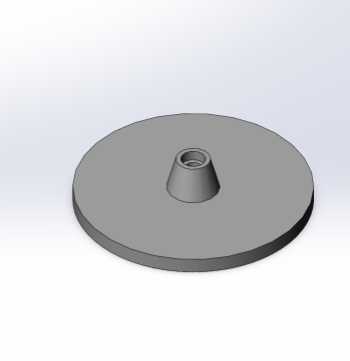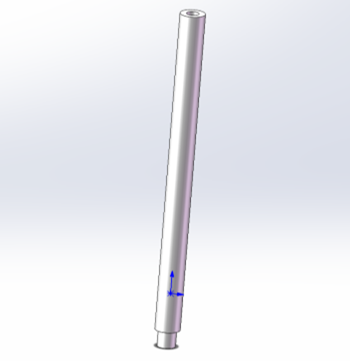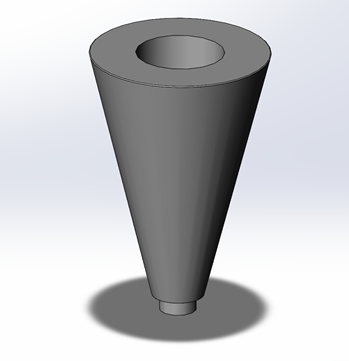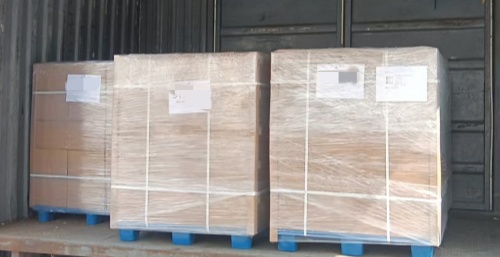Product Description
This is a simple, detachable candle holder.
It consists of three parts: a base, a stem, and a top.
The detachable design saves packaging space, which will reduce shipping costs.
Material and Process
This candle holder is made from the CuZn39Pb3 material by CNC machining process. The addition of plumbum makes CuZn39Pb3 a prime example of free-cutting brass. During machining processes like turning, milling, the plumbum particles act as an internal lubricant, reducing adhesion between the tool and the material so lowering cutting resistance. That achieves a smoother surface finish, lower Ra, and reduces subsequent polishing steps.
Below is the 3D drawing of holder parts:

the 3D drawings of candle holder base

the 3D drawings of candle holder rod

the 3D drawings of candle holder top
The base is made of CuZn39Pb3, directly made from copper bar stock, and processed by CNC into the shape of the drawing.
There is a countersunk head at the bottom for assembling DIN7991 bolts and connecting to the rod. Check out from the below picture:

The rod is made from CuZn39Pb3 as well. The rod is machined directly from bar stock, machine both ends to connect the base and the top, an internal thread is drilled at the bottom and an internal thread is also drilled at the head.
Taking the taper into consideration, the hot heading process is used to make the top, press into the rough shape, and then CNC machining into the specific dimensions. There will assemble an M6 bolt from above to connect the rod.

All parts need to be polished, so clean the workpiece surface of any oil, rust, or impurities is the first step. For rough surfaces, coarse grinding may be used to remove obvious flaws and prepare the surface for fine polishing.
Select tools (e.g., polishing wheels, cloth wheels, sponge wheels) and abrasives based on the material and finish requirements. Rough polishing typically uses larger abrasives (e.g., 80-240 grits), while fine polishing uses ultra-fine abrasives (e.g., 1000 grits and above).
Then electroplated with chrome. Immerse the parts in a dilute acid solution after cleaning for a short time to remove the residual oxide film on the surface, expose the fresh surface of the metal substrate, and enhance the bonding strength between the coating and the substrate.
After the chromium plating is completed, the parts need to be rinsed with clean water to remove the residual chromium plating solution on the surface and prevent corrosion. For parts with high requirements, passivation treatment or drying may also be necessary to ensure the stability of the coating
Packing
The surface is inspected for any flaws, pitting, or peeling is not allowed. For packaging, each piece is wrapped in EPE foam and placed in a box. Then put the boxes on the pallet, tie them with straps, and wrap them with protective film to prevent them from falling apart.

English
العربية
Français
Русский
Español
Português
Deutsch
italiano
日本語
한국어
Nederlands
Tiếng Việt
ไทย
Polski
Türkçe
አማርኛ
ພາສາລາວ
ភាសាខ្មែរ
Bahasa Melayu
ဗမာစာ
தமிழ்
Filipino
Bahasa Indonesia
magyar
Română
Čeština
Монгол
қазақ
Српски
हिन्दी
فارسی
Kiswahili
Slovenčina
Slovenščina
Norsk
Svenska
українська
Ελληνικά
Suomi
עברית
Dansk
Afrikaans
Gaeilge
Eesti keel
latviešu
Беларуская мова
Български
Català
Lietuvių
Lëtzebuergesch
Македонски
































